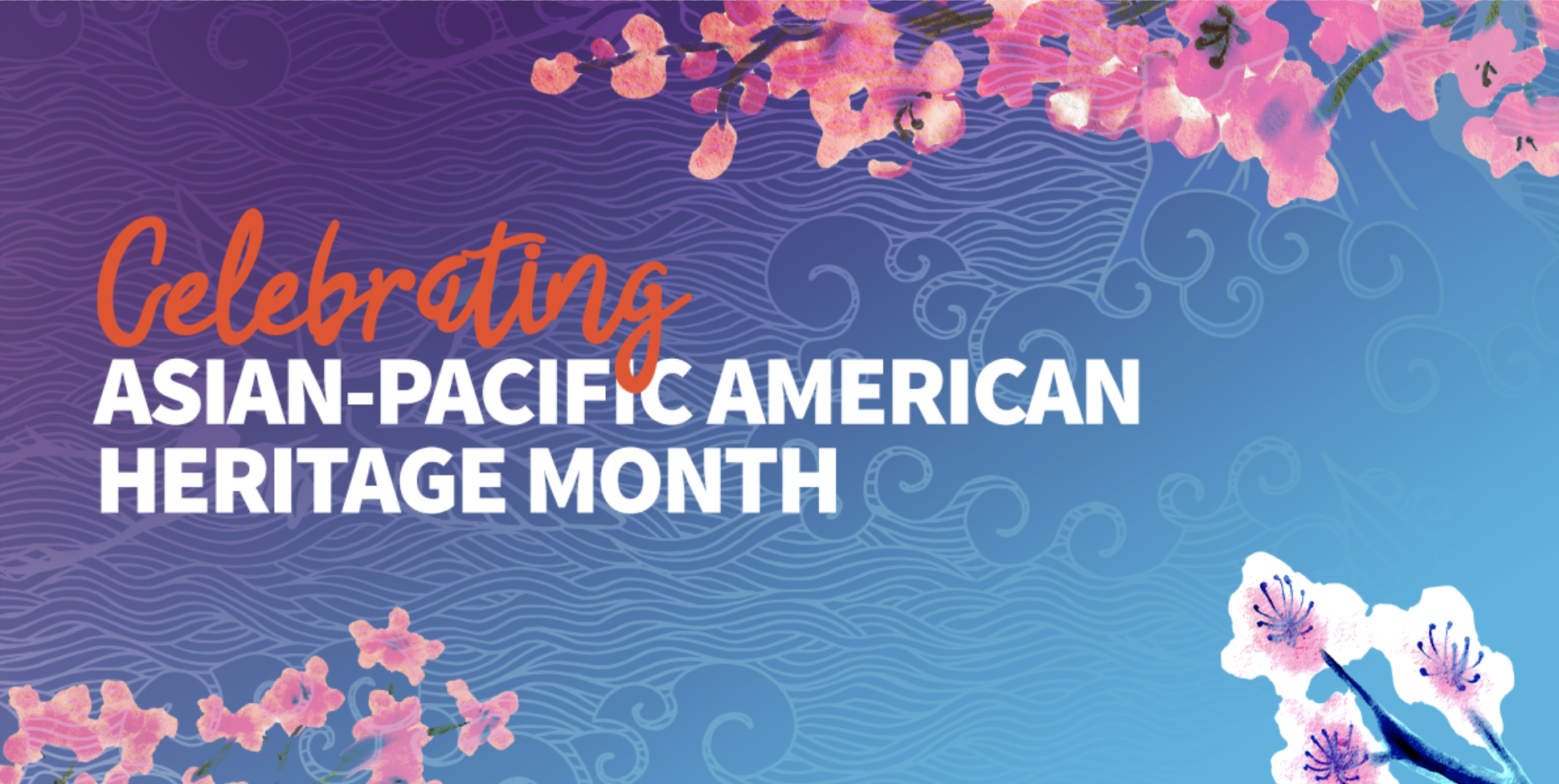Celebrating Asian-Pacific American Heritage Month
mayo 01, 2021
As we continue to emphasize the importance of Diversity, Inclusion, & Belonging at GTL, we want to take the opportunity to recognize another group of people who have enriched America’s history and are instrumental in its future success.
May is Asian-Pacific American Heritage Month – recognizing and celebrating the achievements of Asians and Pacific Islanders in the United States. The annual recognition began in 1992, and the month of May was chosen to commemorate the immigration of the first Japanese individual to the United States on May 7, 1843.
A rather broad term, Asian-Pacific encompasses all of Asia, as well as the Pacific islands of Melanesia (New Guinea, New Caledonia, Vanuatu, Fiji, and the Solomon Islands), Micronesia (Marianas, Guam, Wake Island, Palau, Marshall Islands, Kiribati, Nauru, and the Federated States of Micronesia), and Polynesia (New Zealand, Hawaiian Islands, Rotuma, Midway Islands, Samoa, American Samoa, Tonga, Tuvalu, Cook Islands, French Polynesia, and Easter Island).
This month is a great time to explore the history, traditions, and culture of Asians and Pacific Islanders in the United States. Here are a few resources to help educate yourself on the importance of this month:
Below are just a few Asian-Pacific American leaders whose contributions still make an impact today.
 Ellison Onizuka – First Asian American Astronaut
Ellison Onizuka – First Asian American Astronaut
Colonel Ellison Onizuka was the first Asian American and first person of Japanese origin to fly in space. Born in Hawaii in 1946, Colonel Onizuka held Bachelor of Science and Master of Science degrees in Aerospace Engineering from the University of Colorado at Boulder. In 1970, he entered active duty with the United States Air Force (USAF), where he served as a flight test engineer and test pilot at Sacramento Air Logistics Center at McClellan Air Force Base. He also graduated from the USAF Test Pilot School, becoming a squadron flight test engineer.
Competing against over 8,000 applicants, Colonel Onizuka was selected for the 1978 astronaut program, also known as the Thirty-Five New Guys. He flew his first space mission on January 24, 1985 on the Discovery space shuttle, where he served as a payload specialist.
Colonel Onizuka’s second space flight was on the doomed Space Shuttle Challenger, that exploded 73 seconds after launch. Tragically, all seven crew members, including Colonel Onizuka, were killed. He was buried at the National Memorial Cemetery of the Pacific in Honolulu, Hawaii and posthumously promoted to the rank of colonel in the USAF.
 Chien-Shiung Wu – The First Lady of Physics
Chien-Shiung Wu – The First Lady of Physics
Chien-Shiung Wu was a pioneer and pivotal figure in the history of physics, often referred to as “The First Lady of Physics” for her important work on the Manhattan Project and in experimental physics. She was born in China in 1912, completing her physics degree at National Central University in Nanking before emigrating to the U.S. and earning her Ph.D. in physics from the University of California Berkeley.
Dr. Wu was the first woman hired as faculty in the Physics Department at Princeton University before taking a job at Columbia University and joined the Manhattan Project, which resulted in the creation of the atomic bomb.
Dr. Wu was the first person to confirm Enrico Fermi’s 1933 theory of beta decay (how radioactive atoms become more stable and less radioactive). She also worked with physicists Tsung-Dao Lee and Chen Ning Yang to test the theory that the conservation of parity did not apply during beta decay. She designed the experiment and carried it out. Known as the Wu Experiment, this work resulted in the award of a Nobel Prize in Physics for Lee and Yang; however, Dr. Wu’s work was not acknowledged because she was a woman.
Never discouraged, Dr. Wu continued to be a leader in the field of physics, becoming the first woman President of the American Physical Society, first person to receive the Wolf Prize in Physics, and the recipient of the first honorary doctorate awarded by Princeton University to a woman.
 Patsy Matsu Takemoto Mink – First Asian-American Congresswoman
Patsy Matsu Takemoto Mink – First Asian-American Congresswoman
Patsy Matsu Takemoto Mink was born in Hawaii in 1927, 32 years before it gained U.S. statehood. She graduated as valedictorian from her high school before attending the University of Nebraska, where she experienced racism and worked to eliminate segregation policies. After being diagnosed with a thyroid condition that needed surgery, she returned to Hawaii and finished her education at the University of Hawaii. However, her hopes of becoming a doctor were dashed when she was rejected by all 12 medical schools to which she applied.
Instead, Mrs. Mink applied and was accepted to the University of Chicago Law School. Returning to Hawaii, she was unable to find a job because of her interracial marriage. Instead, she founded her own practice. After several unsuccessful forays into politics, Mrs. Mink won a seat in the U.S. House of Representatives in 1964, making her the first Asian-American woman to serve in Congress. She fought for gender and racial equality, affordable childcare, bilingual education, and Title IX. In 1974, she was able to pass the Women’s Educational Equity Act to promote gender equality in schools.
She had an unsuccessful run for the United States presidency but returned to politics in 1990 when she was reelected to Congress and served six terms in the House of Representatives until her death in 2002. After her death, the Title IX law was renamed the Patsy T. Mink Equal Opportunity in Education Act.
 Tetsuya Fujita – Acclaimed Meteorologist “Mr. Tornado”
Tetsuya Fujita – Acclaimed Meteorologist “Mr. Tornado”
Tetsuya Fujita, also known as Ted Fujita, was a Japanese-born American meteorologist of much acclaim. He earned a bachelor’s degree in mechanical engineering from Meiji College of Technology in Tokyo, where he became an assist professor in the physics department. He earned his doctoral degree from Tokyo University in 1953, after which he moved to the United States and joined the meteorology department at the University of Chicago, where he would remain until his death in 1998.
Dr. Fujita had a lifelong fascination of tornadoes and was responsible for much of our current knowledge of tornado families and multiple vortex tornados, as well as macrobursts and microbursts, which are associated with severe thunderstorms and negatively impact aviation.
In 1971, Dr. Fujita created the Fujita Scale of tornado intensity, which was the first of its kind. Even though it has been superceded in the U.S. and Canada by the EF-Scale (the Enhanced Fujita Scale), the Fujita Scale was instrumental in classifying tornados based on the damage they caused to structures and vegetation.
Dr. Fujita also studied other forms of severe weather, such as thunderstorms and hurricanes, and his novel techniques for analyzing weather conditions are carried out in weather stations all over the world today.
Reach out to your loved one and extend your support!
Posted In: Blog



